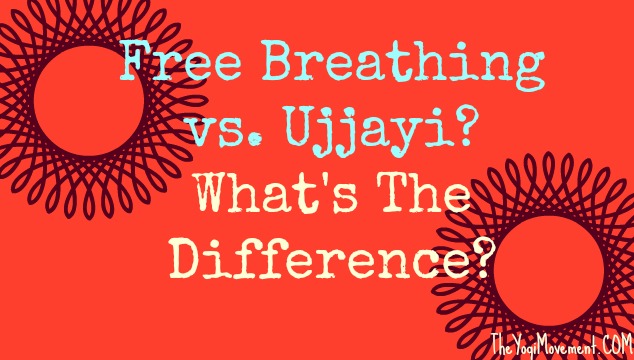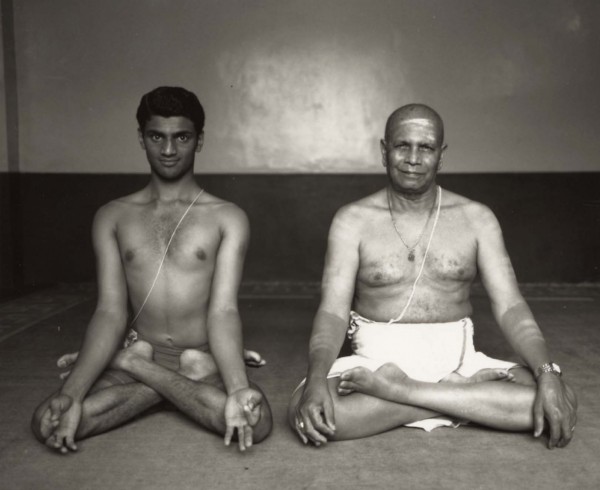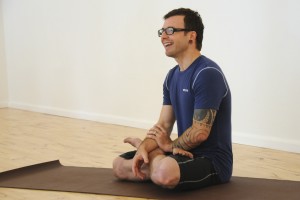I had a few posts and conversations about Ujjayi Pranayama regarding the correct breath in yoga practice. This all got brought up at a conference in 2013 that Sharath held in Mysore, India informing students that the breathing they were actually doing in their practice is not actually called Ujjayi. He said since Guruji did not speak English well, he misunderstood when a student asked him about the name of the breathing, and then from there it became misconstrued as Ujjayi. Ujjayi is actually a pranayama that is deeper and more intense than the breathing we are doing in yoga practice.
Just to be clear: Everyone is breathing correctly, but calling it by the wrong name. I have to be honest, as I write this it all seems kind of silly. Why do we need to identify it at all? Isn’t this just causing more confusion? Let’s just keep doing what we’re doing! If it’s not broke, don’t fix it, right?
I was confused about this myself, so I actually reached out to David Robson who runs the Ashtanga Yoga Centre in Toronto. I follow his blog, and he had a few mentions of this conference. He also mentioned he pulled Sharath aside to ask him what he meant. Because this caused so much controversy and confusion in the yoga community, and some friendly debates on Twitter, I thought it would be best to reach out to a closer source.
Here’s what David had to say about it:
Sharath told me that a student misunderstood Guruji’s response about the breath, and that’s what led to the initial mislabeling. Sharath says that Guruji never referred to the breath we do in practice as Ujjayi. In Yoga Mala (which was written in the late 1950’s) Guruji doesn’t say anything about Ujjayi during asana practice, only Puraka and Rechaka. The one mention of Ujjayi breath in Yoga Mala is a recommendation for pregnant women who can no longer do asana (p.27).
But what is the actual difference in our breath? What is the difference between “free breathing with sound” and “Ujjayi pranayama”? In one sense, the difference is one of classification. While the breath we do in Ujjayi pranayama might sound the same as “free breathing”, they are of a different order. In Yoga Mala, Guruji wrote that “taking in the breath and letting it out is not pranayama.” Only breathing with retentions (kumbhaka) in conjunction with the three bandhas can be considered pranayama (p.23). Pranayama in our system is done while sitting in a lotus position. They are formal breathing exercises that, because they are quite difficult, are not taught until a student started Advanced asanas.
There is also a difference in the performance of free breathing and Ujjayi. It’s not possible to do Ujjayi pranayama while doing the Ashtanga asana routine. The breaths one would take in Ujjayi are too long to be attempted while doing vinyasa and difficult asanas. I have also heard Sharath say the sound that comes from the throat in Ujjayi is much stronger than the sound we want to produce with free breathing. Maybe this is the actual difference you’re wondering about.
This all being said, I teach that there is an element of pranayama that is practiced in the Ashtanga asana sadhana, just as we are also developing and strenghtening the limbs of pratyahara, dharana, dhyana and samadhi. With the proper intention behind our practice, we are never just doing asana.
So, there you have it. There is an actual difference between ‘free breathing with sound’ and ‘Ujjayi,’ and because of the length of breath, and that there are no retentions in practice, it is not even possible to do Ujjayi Pranayama during Asana.
Do I think it’s important to know there is a separate pranayama practice called Ujjayi? Yes! I like to know the history and these little facts, and be as knowledgeable as possible about the evolution of yoga. When something like this comes to the surface, I want to understand it rather than reject it.
Do I think it’s important to stop calling or teaching the ‘free breathing with sound’ we’re doing in practice as Ujjayi? Not necessarily. I don’t think the words we use are that important.
Here is what I think is important is to know:
- We do a deep steady and expansive breath in through the nose and out through the nose with sound
- We use it as a form of one pointed concentration, or meditation, so that any time our mind wonders, we bring it back to the breath.
- Use the breath as a point of awareness for what is going on in postures, and to understand triggers. How can I find space in my breath? Is my breath so constricting that I need to pull back a little, or can I find a way to breathe deeper in a challenging posture. Did my breath just become shallow? Did my breath just speed up because I am thinking about something stressful?
- How does this breath help you find peace during a difficult posture?
- How can you use this breath off of the mat to find peace in a difficult situation?
- Observe – Back to the breath – Observe – back to the breath
Thanks David for taking the time to write me this detailed and thoughtful email. I am grateful to share it with my readers for years to come. I plan to make a trip to visit your Shala in the very near future!
Ommmmmmm My Friends 🙂
And now for a laugh
Your breathing sounds just a little heavy cool guy. You need to come class and learn some Ujjayi. I know you see me every single day like groundhog, and I appreciate it, but I’m not downdog…..




Leave a Reply